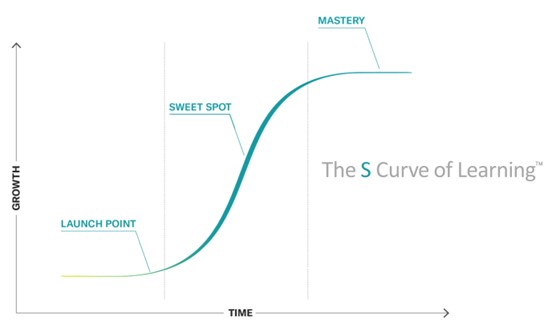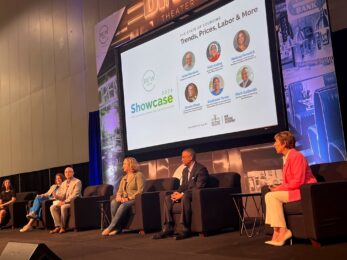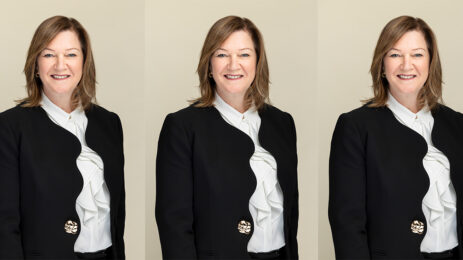Are staffing shortages making the difficult job of planning post-pandemic meetings even more difficult? Whitney Johnson, CEO of Disruption Advisors and author of “Smart Growth: How to Grow Your People To Grow Your Company” has some tips for managing the upskilling required to fill in those gaps during this critical time.
You are calling the Great Resignation the Great Aspiration. Why is that and why do you think it is hitting the hospitality industry so hard?
I’d like to start with the ‘why’ behind calling it the Great Aspiration. Resignation tends to be interpreted as people choosing to bow out, to stop. But, while that is happening, I think it generalizes the motivation behind the mass movement of workers. People have been given the opportunity to consider what matters to them, how they want to work, and how they want their time to be valued.
Many are realizing their current positions are not congruent with their aspirations. So, they are finding new opportunities that better align with what they are looking for. People are leaping towards new opportunities—not away from their current positions. It’s a narrow distinction but an important one.
Almost no industry was more impacted by Covid than the hospitality industry. As such, more meeting workers, because they were laid off, furloughed, shifted to remote, or stuck in the status quo while everything around them changed, had their lives disrupted. And with disruption comes innovation and a spark to start reflecting. The industry was not only put in a Covid-induced blender, but while being mixed around, meeting workers were taking the time to think about what they really want in a career.
Now, many of those meeting workers are following their aspirations to new organizations or new positions.
Read More: Heighten Success with New Skills
Meeting professionals have had to skill-up fast over the last two years to adapt to the shift to hybrid. How can the S Curve of Learning help to manage growth in times like this?
When humans move without a map or guide, we tend to walk in circles. The same is true when we are asked to grow without understanding the overarching picture of growth. This is what we saw over the last two years. Meeting professionals were up-skilling as quickly as possible out of necessity, but often without a clear end goal. So, it felt uncomfortable and difficult for many, and others ended up in places they never intended to land.
Fortunately, the S Curve of Learning™ provides a roadmap of our growth journey, even during times of uncertainty.

We start at the launch point at the base of the S Curve, move slowly upward, and eventually reach the sweet spot as we gain competence and reach top speed. Then, we begin to slow down and flatten off again as we reach mastery. It’s predictable.
In many cases, the very act of knowing where we are in our growth is helpful. It takes fear away, and it reduces shame because we know what is expected of us at our current stage and what’s coming next. It helps us manage our brain’s reaction to challenges so we can set ourselves up for success.
For example, we know the beginning of a curve, the launch point, tends to feel slow—glacially slow. Each component of a skill or job must be learned, so our brains are constantly trying to keep up. We are consciously aware of all the things we don’t know and all the new things we are learning—so we notice every second of the day. They feel long. But it won’t be like that forever.
One of my favorite strategies to manage ourselves when growth feels slow is to set ridiculously small goals. Following an interview with James Clear on the Disrupt Yourself podcast, I decided I wanted to run a 5k. But I didn’t set my goal for 30 or 15 minutes a day. No, my goal was to run 5 minutes a day for the first week, alternating between running and walking every 30 seconds. Then, I added 10 seconds every day until I ran my 5k a year and a half later.
Setting a small goal allows us to see tangible results. Our brains see progress, even if we aren’t performing at the level we will be in the mastery phase of our S Curves.
For meeting professionals, a small goal might be to watch one minute of video conference tutorials a day. Or to write down one new hybrid meeting idea. Whatever your next S Curve is, break it down until you find one laughably small part that you can complete each day, no matter what else is going on in your life.
For those who manage meeting professionals, recognizing and helping people understand where they are on their personal S Curves is crucial to recruiting and retaining top employees. Individuals at various stages along the S Curve need different types of support, and without having the discussion, it is difficult to know what type of support they need to meet their individual growth goals.
How can leaders in the space help their teams stay motivated and resilient during so much uncertainty and change?
The hospitality industry as a whole is unexpectedly at the base of a new S Curve, and has been at the launch point of several S Curves over the last two years. And, just as individuals find solace and support in the fact that the launch point always feels slow, so too do teams. Creating the space to bring teams together and create connections enhances resiliency and creates opportunity for empathy building.
Think of the work of a team as a hill to climb. When connected to each other, the work feels easier, the climb less steep. This is exactly what social psychology researchers discovered. When people look at the slant of the mountain by themselves, they greatly overestimate the slant. But when people look at the mountain with someone they trust, they don’t overestimate it as much.
So, have conversations. Normalize the feelings that come with growth. Creating a supportive relationship among team members is worth the time and effort.
Provide people with the resources they need. For people at the launch point, what they need from their leaders is support. In the sweet spot, people need help with focus. At mastery, people need to talk about what’s next.
Read More: The Science of Motivation: Why Cash Isn’t Always King
Motivation can be found in celebration. When you celebrate, you are telling your brain—look at this. You did this. You met this expectation. Celebrating releases dopamine—the feel-good chemical responsible for making us feel motivated.
What is there to celebrate? Innovation. The pandemic provided unprecedented restrictions. The way meeting professionals had always done things before wouldn’t work. Justin Ball, president and founder of Bespoke Connects, noted that they, like so many others, had to shift the focus of their work in the digital space.
He said, “Our focus changed from being focused on content to being focused on context. In the virtual environment, we know attendees have distractions from their front door deliveries to kids learning from home, so how we keep guests engaged with context in what they are watching is often just as important as the content we are sharing.” Meeting workers turned constraints into tools of creation, and this should be celebrated.
Stop the daily grind and celebrate all the ways you’ve innovated over the past few years. This doesn’t have to be a big party—though by all means, you deserve it—it can be as simple as looking at yourself in the mirror or your team around the table and saying “victory.”
What tips do you have for meeting professionals who are exhausted from all the starts and stops in the industry over the last two years and looking for comfort?
First, know that the beginning of the S Curve is always slow at the start—you are not alone and you do not have to stay here long. If you create a culture of growth and keep on your S Curves, the speed will pick up and you will reach that sweet spot.
Second, you may be exhausted, but your work is not done. Finding comfort will only come once you start finding success, which can only happen after you embrace the constraints that are causing you discomfort.
How do you embrace constraints?
- Step 1: Ask yourself, “How can this obstacle help me?”
- Step 2: Reframe from “I can’t because [fill in the blank]” to “I can if [fill in the blank],” “I can accomplish this goal or dream if [fill in the blank].” What’s the thing you need?
- Step 3: Once you know what you need, determine who has it. Do they have a lot of it? Then ask, “What do you have a lot of? And who needs it? How can you start to barter?”
- Step 4: Activate emotions. There must be a reason why it’s worth it to you. Without this emotion, you will, at best, go to the workaround stage, at worst be a victim to the constraints. Tap into your positive and your negative emotions. Ask, “Why does this matter to me? Why am I excited? And why am I scared?” Hold both of these together. It’s combustible. It’s powerful.
- Step 5: Use your emotions to get what you need.
- Step 6: Accomplish your goal or dream.
It has been a long, hard few years. Meeting planners were forcibly pushed from the top of multiple S Curves, only to find themselves at the bottom—the launch point—of many more. The launch point can be a hard, uncomfortable place to be. But growth is coming. By using the S Curve of Learning™ as a map, you can navigate into the sweet spot and the comfort and energy that comes with it.
Whitney Johnson is CEO of Disruption Advisors, a tech-enabled talent development company (an Inc 5000 fastest-growing company in 2020), and one of the top 10 management thinkers in the world according to Thinkers50. She is the author of Smart Growth: How to Grow Your People To Grow Your Company, and host of the “Disrupt Yourself” podcast.




